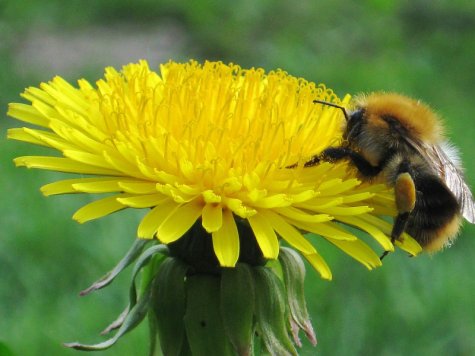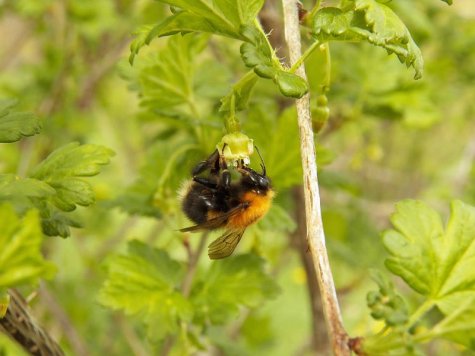Bumblebees with brown "scruff" – farm worker and housewife
Text: Eha Kruus
Photos: Evelii Viik and Fabien Cremona
Translation: Liis
Common carder bee Põldkimalane Bombus pascuorum
Tree bumblebee Talukimalane Bombus hypnorum
Moss carder bee; Large carder bee Samblakimalane Bombus muscorum
Brown-banded carder bee Jaanikimalane Bombus humilis
Schrenck's carder bee Schrencki kimalane Bombus schrencki
"The brown-banded carder bee is like a farm worker wearing brown work trousers, the tree bumblebee again like a housewife with a white apron “. So simple it is to distinguish between these species, professor Marika Mänd says. Indeed, the presentation of the most common species with a brown thorax might stop at this but inevitably nature is more variable.
Recognising a common carder bee may not always be easy because it is one of the most variable species. The black hairs that are characteristic in the colour pattern of its abdomen may be mixed up with light brown or grey. Masked like this, the by far most common of our brown bumblebees often rouses the hope that a rarer species has been found, for instance the moss carder bee (B. muscorum), the brown-banded carder bee (B. humilis) or Schrenck’s carder bee (B. schrencki). The noticeably lighter band at the hips, almost light grey and different from the other bands, and the yellowish-brown abdomen tip are characteristic for the common carder bee. Usually there is a broad black band in the middle of its abdomen. More seldom we find at least some black hairs on the sides of the third segment that do not occur on the moss carder bee and brown-banded carder bee, but may appear on the Schrenk’s carder bee. Unlike the latter the common carder bee has no black hairs on the fifth abdomen segment.
Tree bumblebee
The tree carder bee (B. hypnorum), with a white abdomen tip, belongs to the group with short mouth parts unlike the common carder bee that has very long mouth parts. It can be found near human dwellings more often than the others.
Join the „Meie kimalaste – Our bumblebees“ group on Facebook: LINK
There you can share images of your home garden bumble bees with other enthusiasts!










